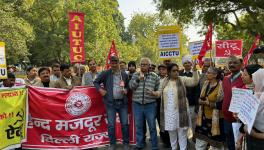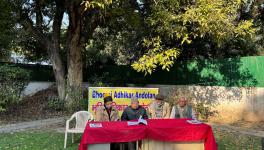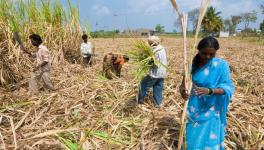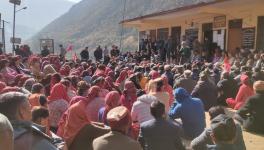For The Land We Till, The Harvest We Reap; The Struggle Shall Go On!
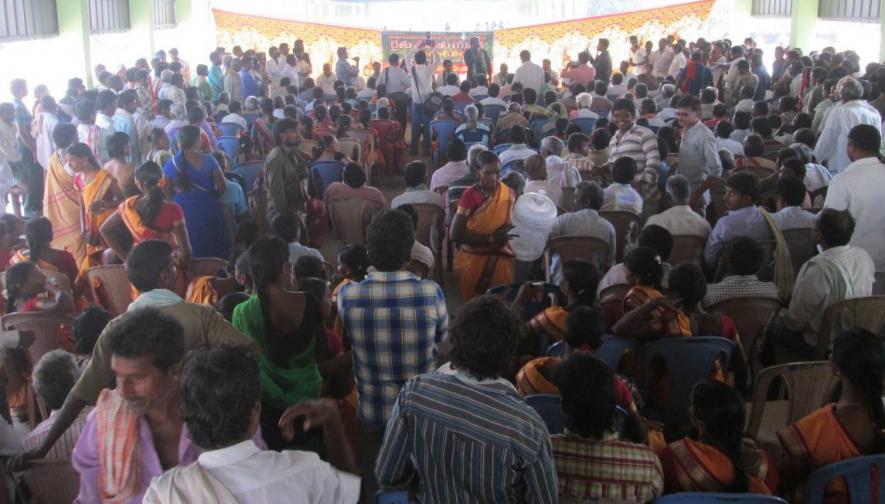
Telangana struggle
The peasantry in Telangana is not new to struggles. Rather the peasant struggles in this part of India have been a shining example for the oppressed peasantry elsewhere and the Telangana People’s struggle has been an inspiration that has spurred radicalisation of peasantry in other parts of India. The Telangana struggle witnessed mobilisation of the peasantry against the feudal oppression as well as the Nizam’s autocratic rule under the leadership of Andhra Mahasabha, the Kisan Sabha and the Communist Party. It also saw struggles against the vestiges of feudalism like the vetti system (forced labour and illegal exactions), the caste oppression and untouchability, rack-renting, illegal evictions, exorbitant rents and taxes and against the Jagirdari system. It is estimated that about 4,000 people were killed by the razakars (the Nizam’s mercenary army), the police, the Indian army and the landlord terror during 1946-1951, and thousands died of diseases and torture in concentration camps. The impact of the people’s struggle however, was impeccable and it has hence rightly been referred to as the most revolutionary of all peasant uprisings in India.
The people of Telangana had an impressive record of achievements and gains from the uprising. Comrade P.Sundarayya has recorded that the peasantry in about 3000 villages covering roughly a population of 3 million in an area of about 16,000 square miles, mostly in the districts of Nalgonda, Warangal and Khammam, had succeeded in setting up gram raj, on the basis of village Panchayats. In these villages, the hated landlords- the pillars of the Nizam’s autocracy in the rural areas- were driven away from their fortress-like houses- gadis- and their lands were seized by the peasantry. One million acres of land was redistributed among the peasantry under the guidance of people’s committees. Illegal evictions came to an end and the vetti system was abolished. Exorbitant rates of interest were either reduced drastically or altogether forbidden. The daily wages of agricultural labourers were increased and a minimum wage was enforced. Tribals were accorded forest rights and for a period of 12 to 18 months the entire administration in these areas was conducted by the village peasant committees. To this heroic peasant resistance goes the credit of pushing the question of the agrarian revolution into the forefront, forcing the then Congress to half-heartedly come up with different agrarian reform measures although dishonest and not meeting the aspirations of the peasantry.
Could these be dismissed as the reflections on a bygone era that are more like a fairy-tale rendering in the present day and age when the ruling classes have relegated slogans like ‘land to the tiller’ to the background and ‘land reform’ in the Neo-Liberal parlance is devoid of any redistributive character and has come to mean removal of ceilings and corporatisation? The answer from the struggling peasants and agricultural workers in Telangana would be an emphatic ‘No’. That is what the Kisan Sangharsh Jatha found throughout the State. The legacy of the Telangana Armed Peasants’ Struggle lives on! It continues to inspire the peasant movement and activists for greater struggles ahead. The entire State is dotted by innumerable martyrs’ columns and memorials to the brave comrades of the struggle as well as those who were killed by the ruling classes in later struggles. Struggles for land rights, rights of tenant farmers, forest rights of Adivasis and other traditional forest dwellers, against caste and class oppression, against the neo-liberal economic policies, against corporate land grab and for a pro-peasant alternative that will protect Jal, Jungle and Zameen are still going on.
The Kisan Sangharsh Jatha entered into Telangana at Kodad, part of erstwhile Nalgonda District and presently part of the newly carved Suryapet District on the night of 11th November, 2016. It moved from Kodad to Munagala on 12th November morning. At Munagala the Jatha team paid floral tributes to P.Sundarayya and Uppula Ramaiah a martyr of the Telangana struggle. Altogether 43 comrades were martyred in the Munagala Paragana during the Telangana struggle. The Jatha leader also remembered the contributions of Komaram Bheem, a tribal leader who led an armed rebellion against the Asaf Jahi Dynasty and Nizam’s Government and was martyred in 1940. He also paid tributes to the memory of Chityala Ailamma who revolted against the notorious feudal Zamindar Ramachandra Reddy who was the Visnoor Deshmukh, to save her land when he tried to occupy it. She played a role in the Telangana struggle and inspired many. At Suryapet hundreds of activists on bikes led the Jatha vehicle to Suryapet Agricultural Market where Kolattam by women from nearby villages as well as revolutionary songs by Praja Natya Mandali greeted the Jatha. Addressing the thousands who had gathered at the venue the Jatha leader said that the Telangana Peasants’ struggle was always an inspiration and remembered the living legend Mallu Swarajyam who hails from the region. He called upon the peasantry to unite and foil divisive moves of the BJP and Sangh Parivar and fight against the anti-peasant neoliberal policies. Later the Jatha was received at Kusumanchi, Khammam, Mahbubabad, all places of inspiring struggles. At Mahbubabad Venkanna an Adivasi farmer complained of harassment by forest officials and submitted a memorandum.
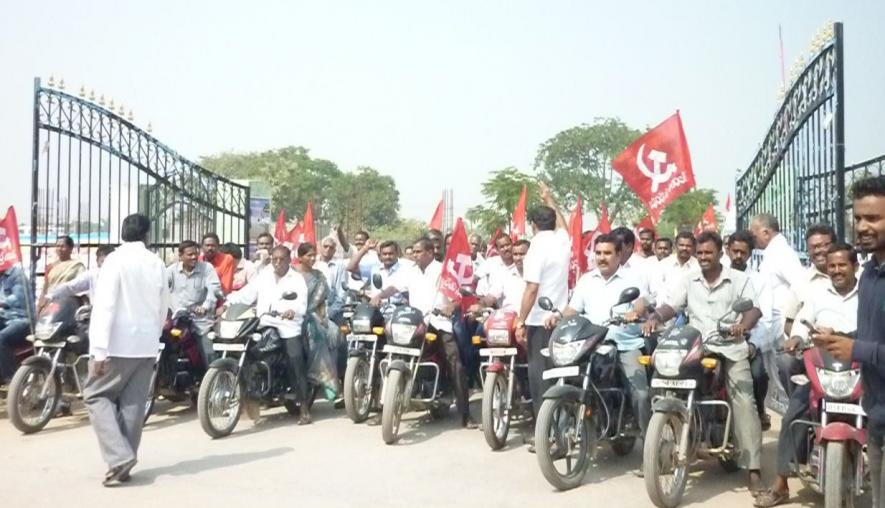
On 13th November the Jatha moved into Warangal Rural district where struggles of the peasantry, agricultural workers and the working class had led to victories of the red flag in over a dozen Panchayats. The first stop was Ashok Nagar where the Communist Party was being elected for the last 5 decades uninterruptedly. The Jatha team paid respects at the statue of Golya Naik, Adivasi leader and the former President of the Panchayat. It also paid respects to two martyrs killed by Congress goons two decades ago. The Adivasi tenant farmers complained that they were not getting any loans or other facilities from the government. They also pointed out that the Tendu leaves they collect from the forest are not getting proper prices. The Jatha was received enthusiastically by the farmers, a large number of whom were Adivasis. The Jatha then moved to Gangadevi Palli village which is renowned as a model Panchayat that has won many national and international awards. The Panchayat under the CPI(M) has managed to provide potable water to all houses with regulation of the use under community management. It has attained 100 percent literacy and is free of open defecation. It also provides free wi-fi to all residents with the assistance of Swecha an affiliate of the Free Software Movement of India. The Panchayat President Rajamouli greeted the Jatha and explained the manner in which the village could be transformed. This was followed by receptions and meetings at Jangaon, Aler and Bhuvanagiri. The Jatha leaders paid floral tributes to Babasaheb Ambedkar at Jangaon. At Bhuvanagiri the team visited the Rythu Bazar where farmers expressed their anger against the Narendra Modi-led BJP government’s decision to demonetize Rs.500/- and Rs.1000/-. They pointed out that their produce was not sold and vegetables were perishing as there were no buyers. A memorandum was also submitted seeking expansion of the market place which is long pending due to hurdles created by vested interests. In all these venues leaders of different mass organisations, other farmers’ groups and also some representatives of political parties greeted the Jatha.
On 14th November there were receptions at Hyderabad, Gajwel, Siddipet and Karimnagar where the speakers attacked the policies of the State and Central Governments which were pushing farmers and rural poor into extreme distress and also dispossessing them of their land. On 15th November the Jatha was received at Jagtial and from there at Vempet Chowrastha the Kisan Sangharsh Jatha expressed Solidarity with the Sugarcane Growers and Workers of Nizam Deccan Sugar Limited in Jagtial who have been fighting against the closure of the factory. The historic Nizam Sugar Factory (presently called Nizam Deccan Sugars Limited) has been closed down permanently throwing thousands of families into great insecurity. The Telangana State Government which had promised restart of the factory and crushing has failed to implement the decision. Farmers who grew Sugarcane are in dire straits. They organised a massive protest against government inaction. Thousands of them who were marching to the factory warmly welcomed the Jatha and requested intervention to resolve the problem. Jatha leader Vijoo Krishnan who is also Co-Convenor of All India Coordination Committee of Sugarcane Growers addressed the farmers and workers and assured that their issue will be taken up during the Kisan Sangharsh Rally and Parliament March on 24th November and Parliament Dharna by Sugarcane Growers on 25th November. He called for immediate clearance of arrears of farmers worth crores of rupees. AIKS Vice President Sarampally Malla Reddy also addressed the gathering and hit out at the anti-peasant policies of the State and Central governments.
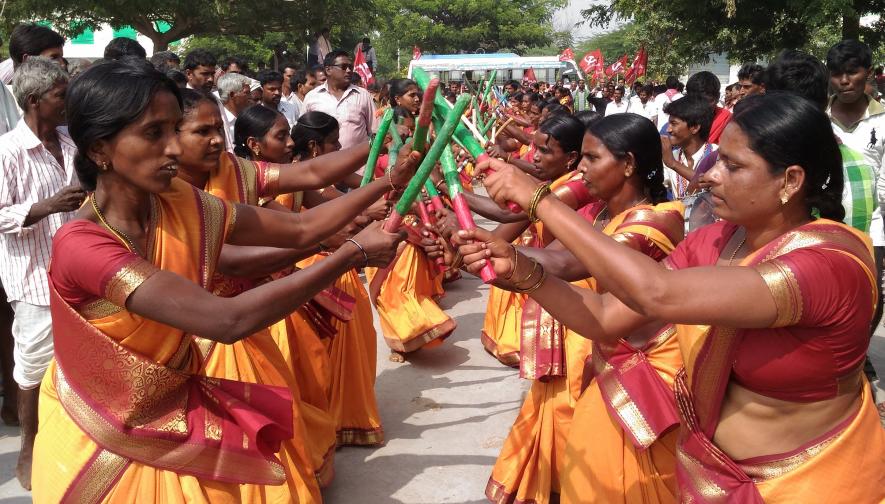
At Nirmal, newly carved district in erstwhile Adilabad, Telangana, the Kisan Sangharsh Jatha found a long queue before the Andhra Bank. A big majority were women. Bhoomamma and Lakshmi have been coming daily for a week they said to convert the money they had received in payment for their paddy crop. They mentioned that they had sold crops worth Rs.28,000/- and Rs.42,000/- respectively and had got paid in notes of Rs.500/- and Rs.1000/-. They have not been able to convert the amount into legal tender despite waiting day-long from dawn to dusk for many days setting aside all activity. The story was no different today as they left dejected as the bank officials informed that they had no more cash. Ashanna a farmer explained how his efforts to convert Rs.50,000/- he got in return for paddy he sold has been futile for yet another day. Speaking to the Jatha leader they all said it had disrupted their daily life and stalled agricultural activities. It had led to destruction of vegetables they had grown as there were no buyers and they were unable to buy essential commodities as well as agricultural inputs. Narendra Modi has gifted a bitter harvest for these and countless other hapless Peasants. The Jatha then moved to Adilabad where it was received by CITU, AIDWA, SFI, DYFI and Joint Action Committee of Farmers and a meeting was held. The Jatha completed around 1300 kilometres in Telangana and entered into Maharashtra by late evening carrying with them the inspiring memories of struggles in Telangana. The peasantry are clear that for the land they till and the harvest they reap the struggle shall go on against all odds.
Get the latest reports & analysis with people's perspective on Protests, movements & deep analytical videos, discussions of the current affairs in your Telegram app. Subscribe to NewsClick's Telegram channel & get Real-Time updates on stories, as they get published on our website.











